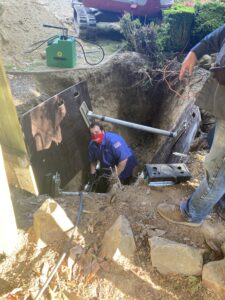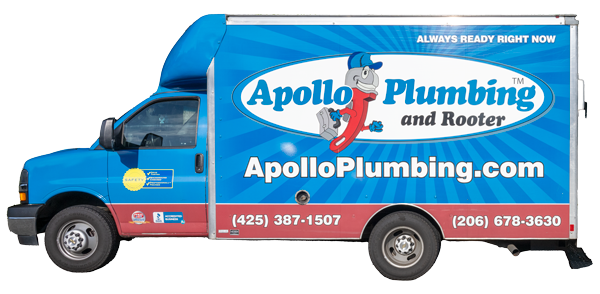Plumbing usually attracts no attention until it stops working. However, it deserves great respect for the service it provides and has done so for thousands of years. As one of the best ideas that contribute to civilization, the invention of pipe ranks high.
Understanding the Importance of a Sewer Cleanout
Almost always hidden behind walls, pipes create a network throughout your home. Whether bringing in clean water or removing waste, they create conveniences that become easy to take for granted. However, clogs can form, causing backed-up drains and toilets that do not flush. Professional plumbers need a sewer cleanout to access and clear underground stoppages, breaks in the line, or invasive tree roots.
Drinking water comes into your home under pressure, but the pipes that remove it must maintain a slope underground that allows gravity to create flow. As a result, wastewater and the re fuse it carries cannot bypass blockages. In addition, a sagging sewer line can develop a dip that holds water until it can contain no more and starts backing up. An access point allows a plumber to break up the clog and get waste moving again.
fuse it carries cannot bypass blockages. In addition, a sagging sewer line can develop a dip that holds water until it can contain no more and starts backing up. An access point allows a plumber to break up the clog and get waste moving again.
Finding the Cleanout on Your Property
Almost every home has a sewer cleanout, but most people do not know where to find it. A preference for hiding white PVC may give it a spot in a flower bed or under a few inches of dirt. While understandable that no one wants to look at it, a cleanout serves a particular purpose.
You can locate it when you understand it lies in line with the pipe that connects your bathroom and kitchen drains to a sewer or septic tank. You may also get an idea of its location by sighting the plumbing stack on your roof. As a vent pipe, it prevents vacuums and helps move wastewater along without gurgling.
• Around the Foundation
Usually, within 3 feet of your home, if you have a septic tank, the cleanout may seem easy to find when you start looking for it.
• Near the Sidewalk
Markings on the curb may guide you directly to your cleanout. Some municipalities put an “S” to mark where your sewer line enters the mainline. Then, when you look at your house, your gaze makes a straight line to the bathroom lateral where you can find the cleanout.
• Inside the Attic or Basement
While it may not occur in your home, a location inside some older houses can make a cleanout hard to find. New construction in the United States started using PVC for plumbing in the 1950s, and upgrades usually included adding it for exterior sewer cleanouts. You may need to look in the basement, attic, or crawl space. An exterior cleanout provides the access that a professional plumber needs to detect and remove a clog. Updating your plumbing system with a capped PVC pipe can immediately access blocked lines when you need it.
Considering the Health Hazards of a Plumbing Backup
The need to locate your sewer cleanout relies more on health safety than convenience. When clogs occur in pipes that take waste and wastewater away from your home, they can cause raw sewage to back up in shower or tub drains. Contact with the bacteria and viruses that live there can provide severe health threats. So when you notice a drain that moves water slowly or a toilet that threatens to overflow, you receive an alert to take preventive action.
At the first sign of a sewage problem with a drain or toilet, you can help prevent damage by turning off the water supply lines. Then, delay using any water fixtures until your drains work freely again. When you locate your outside sewer cleanout, make sure to clear away any grass, dirt, or plants that hide it from view.
Enjoying the Sewer Cleanout Benefits
Aside from the peace of mind that comes from knowing your preparedness can handle the disposal of waste from your home, a convenient and accessible cleanout offers many benefits. You may never experience a clog in your sewer line, but then you may have a backup when you least expect it. A child’s toy, an accidental toss of a washcloth into a toilet, or a tree’s fine roots can create a problem that requires professional help.
• Saving Money
A cleanout gives a direct and convenient way to find the cause of a blockage in a lateral line. Without it, plumbers can still fix the problem. However, it may require removing the toilet and going to the stacks on a roof to repair it. Access to your sewer line through a convenient outdoor cleanout lets you avoid a costly and unnecessary expense.
• Conforming to State Regulations
Some states require cleanouts, but others may treat them as optional guidelines. Still, the benefits and conveniences make them well worth having when you need them. When you take preventive action that preserves the value of your home and prevents intrusion of unhealthy backups, you deserve praise for your efforts.
• Preventing Disruption to Your Landscape Plants
Plumbers can send a camera down a lateral line to detect and identify blockages and use a snake or a water jet to clear them. Unfortunately, when the only way to find a clog requires digging up a sewer line, your landscaping may suffer from it. Whether you lose a favorite rose bush, a beautiful shrub, or only the sod, the uprooting of your lawn creates an ugly mess that takes time to recover.
Considering Your Options
A cleanout can provide convenience and a healthy environment for your home. However, wastewater that backs up can create significant health threats when it seeps into drywall, floors, and furnishings. In addition, sewer gasses provide exposure to harmful influences as well. When you know the location of your sewer cleanout, your plumber can use it to find minor or significant problems with your drains.

